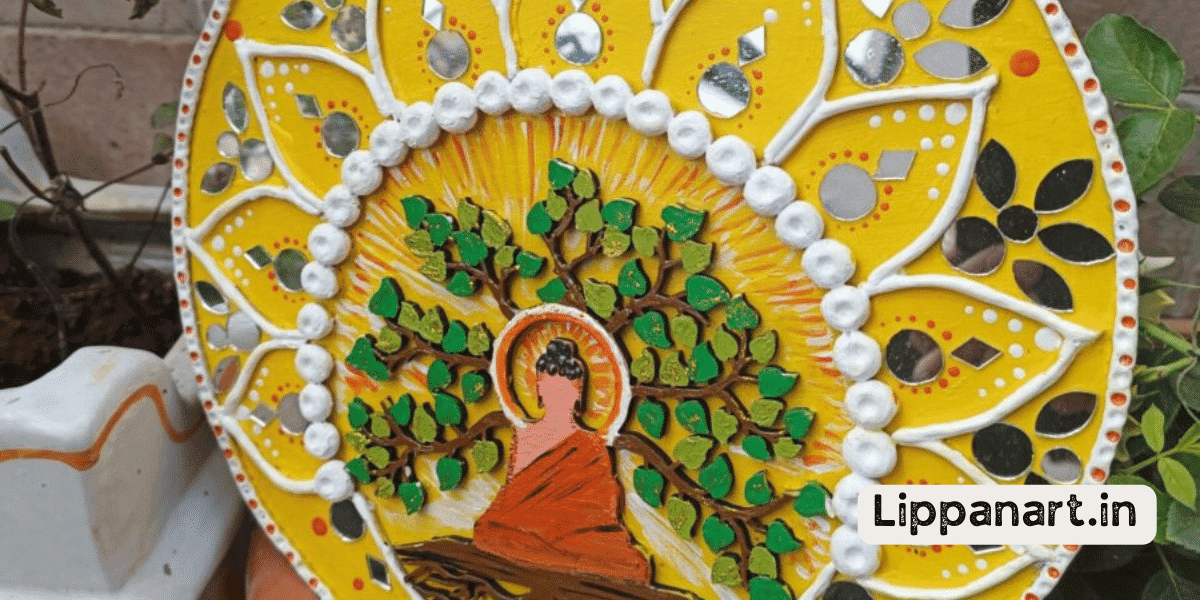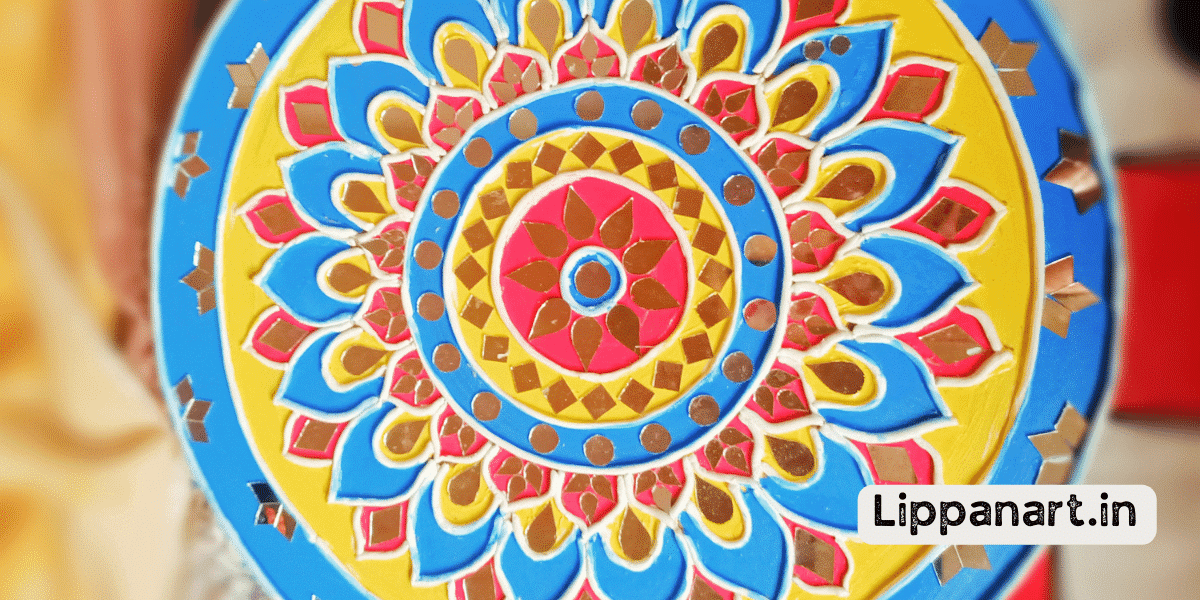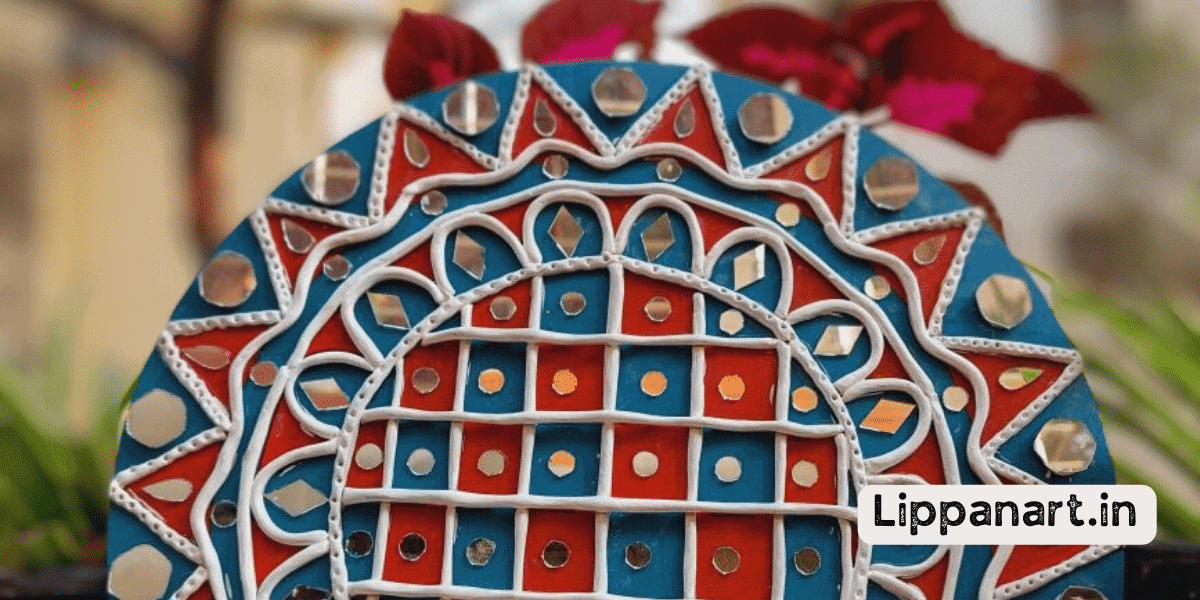Are you looking for an innovative way to create beautiful, intricate Lippan art? If so, you’ve probably heard of clay cones and ceramic cones. But how can you decide which one is best for your needs?
In this article, we will delve into the advantages and disadvantages of both clay and ceramic cones, aiding you in making an informed choice. We will explore the various applications and techniques associated with each, assisting you in determining which aligns best with your artistic vision.
So, no matter if you’re a novice or an expert, you’ll have all the information you need to make the best choice for your project.
Key Takeaways
- Clay cones are versatile and easy to use, making them suitable for creating intricate designs and wall decorations in lippan art.
- Ceramic cones offer more design options and durability compared to clay cones, making them ideal for complex lippan art projects.
- Clay cones are cost-effective and widely available, while ceramic cones provide vibrant colours and a wide range of material options.
- Both clay and ceramic cones possess their own set of advantages and drawbacks, and the decision between them hinges on the particular demands of the lippan art project at hand.

Clay Cones
Clay cones are a popular choice for creating Lippan art.
Let’s explore the characteristics, advantages, and disadvantages of this material to see if it’s the right choice for your project.
Characteristics
You’ll find that clay cones offer many unique characteristics compared to ceramic cones for lippan art.
- Versatility: Clay cones are highly versatile, as they can be used for a variety of applications in lippan art, such as creating intricate designs, liquid paste, and wall decorations.
- Durability: Clay cones are strong and durable and can easily withstand the rigours of daily use without damage or breakage.
- Cost-Effective: Clay cones are also cost-effective since they’re widely available and relatively inexpensive compared to ceramic cones.
- Easy to Use: Clay cones are easy to use and can be manipulated in a variety of ways to create beautiful, intricate designs.
With these advantages, clay cones are the perfect choice for anyone looking to create stunning lippan art.
Advantages
Besides their versatility, clay cones also offer several distinct advantages over ceramic cones for lippan art. Clay cones are made from polymer clay, a material that is a combination of several clay particles, fillers, and other additives. This allows for the clay to be moulded into the desired shape and size. The inherent properties of clay render it notably user-friendly, facilitating the creation of intricate designs with greater ease and precision.
| Advantage | Clay Cone | Ceramic Cone |
|---|---|---|
| Material | Polymer clay | Ceramic |
| Durability | Strong | Fragile |
| Design | Intricate | Basic |
The strength and durability of clay cones make them significantly more reliable than ceramic cones, as the clay material is able to withstand more wear and tear without cracking or breaking. Additionally, clay cones are much easier to customize, allowing for creative designs to be made for lippan art. With its versatility and reliability, clay cones are the ideal choice for innovators looking to make unique lippan art.
Disadvantages
You may find some drawbacks to using clay cones for lippan art. Clay cones can be difficult to work with due to their particle size. Clay cones tend to have a larger particle size than ceramic cones, making them more difficult to manipulate. The larger particles can also make them harder to form into shapes and designs.
Another drawback is that clay cones can be difficult to use in certain magic arts, where small, precise details are needed. Using clay cones for these specific arts can be time-consuming and frustrating.
Ceramic Cones
Ceramic cones are a popular choice for lippan art because they have several advantages. Firstly, ceramic cones are durable and can withstand high temperatures, making them suitable for firing in a kiln. This allows for the creation of long-lasting lippan art pieces. Secondly, ceramic cones come in a variety of sizes and shapes, offering artists more options for their designs. Additionally, ceramic cones can be easily painted or glazed, allowing for a wide range of colour choices. However, there are also some disadvantages to using ceramic cones. One major drawback is that they can be more expensive compared to clay cones.
Additionally, ceramic cones require specialized equipment, such as a kiln, which may not be readily available to all artists. It’s also important to note that ceramic cones may have a longer drying time compared to clay cones. In conclusion, ceramic cones are a durable and versatile option for lippan art, but they may not be suitable for all budgets or available resources.
Characteristics
You’ll find that ceramic cones have several distinct characteristics compared to clay cones. They are:
Durability:
- Clay cones are typically more fragile and can quickly erode, making them unsuitable for projects that require long-term delivery.
- Ceramic cones are made of a more durable material and can easily withstand the elements, making them a good choice for projects that require long-term delivery.
Versatility:
- Clay cones are limited in their design options, making them ill-suited for complex projects.
- Ceramic cones offer more versatility in terms of design, making them ideal for complex Lippan art projects.
Advantages
The advantages of using ceramic cones for Lippan art are numerous. Ceramic cones are popular in Lippan art because they are strong, durable, and have a wide range of design possibilities. Moreover, ceramic cones are fired in a kiln and can be made from a variety of materials, such as ceramic paste, porcelain, and stoneware.
| Products | Materials | Designs |
|---|---|---|
| Durable | Ceramic Paste | Versatile |
| Vibrant Colors | Porcelain | Creative |
| Long-lasting | Stoneware | Unique |
Ceramic cones are the ideal choice for those who want to create high-quality, innovative Lippan art. They provide the perfect canvas to create unique pieces of art that are both aesthetically pleasing and durable. Furthermore, the wide range of materials available for ceramic cones makes them ideal for creating vibrant colours and intricate designs.
Disadvantages
Have you considered the disadvantages of using ceramic cones for Lippan art? Ceramic cones are indeed more durable and heat resistant than clay cones. However, they aren’t as versatile for creating intricate designs. Clay cones are much easier to work with, allowing for more detailed patterns to be created.
Not as versatile:
- Difficult to create intricate patterns
- Not as effective with wet clay
Less durable:
- Easily breakable
- Prone to particles of clay
When it comes to making creative designs, clay cones are superior to ceramic cones. Clay cones are soft enough to be moulded and shaped into intricate designs, while ceramic cones can be fragile and easily break. Furthermore, ceramic cones can’t effectively hold wet clay, resulting in a lower quality of lippan art.
For those who desire innovation in their lippan art, clay cones are the preferred choice.
Application of Clay Cones
You’d be surprised to learn just how many different applications clay cones have in Lippan art. From craft projects to intricate art, cones made of clay offer a wide range of possibilities. The clay itself is the magic ingredient, providing an easy-to-use material that can be moulded into virtually any shape and size. Additionally, it can also be used as a paste for mud work. With their malleable texture, clay cones are suited to a variety of creative endeavours.
For craft projects, clay cones can be used to make unique decorations and figurines. You can even make your mini-sculptures and sculptures, depending on the size you want.
In the realm of art, clay cones offer a versatile canvas for crafting intricate patterns and forms. Whether you aspire to create abstract compositions or capture realistic representations, clay cones provide a versatile medium to bring any artistic vision to life.
Clay cones also offer the artist a unique way to express themselves. With the ability to construct and shape them as desired, clay cones can be used to create anything from small trinkets to grandiose installations. The possibilities are endless when it comes to clay cones and their potential applications in Lippan art.
- Editor’s Choice
- Best Seller
- Amazon Choice
Application of Ceramic Cones
Besides clay cones, ceramic cones can also be used for a variety of Lippan art projects. They’re the perfect clay body for making detailed, intricate designs. Using electronic kilns, ceramic clay cones are fired to very high temperatures, making them strong and durable.
The beauty of ceramic clay cones is that they offer more options for creating unique lippan art designs. By using different colours, glazes, and firing techniques, it’s possible to create a wide range of textures and effects.
The HobbyIdeas team provides a range of ceramic clay cones for lippan art in various shapes, sizes, and colours. With these, you can easily make intricate designs, stunning shapes, and beautiful patterns.
Ceramic cones are an excellent clay art form for those who are looking to explore their creative side. With the right tools and techniques, it’s possible to create stunning pieces of art. Whether it’s a colourful wall hanging or an intricate sculpture, ceramic cones enable artists to express themselves in their unique way.
Conclusion
In the final analysis, both clay and ceramic cones have their advantages when it comes to creating lippan art.
However, clay cones are more cost-effective and easier to use, making them the clear winner in this debate.
On the flip side, ceramic cones are longer-lasting and more durable.
At the end of the day, it all boils down to preference and what works best for you.
So, don’t be afraid to experiment and find out which cone is the right fit for your project.

















